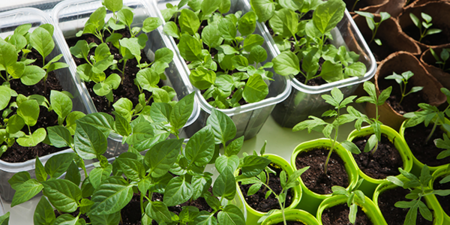New to Indoor Gardening? Here's What You Should Know!
Are you a new indoor gardener looking for some tips to ensure your plants thrive? Look no further! Indoor gardening has become increasingly popular in recent years, and for good reason. Not only does it allow you to grow plants year-round, but it also offers a big benefit in terms of control.
Indoor gardening helps you ensure your plants receive the exact amount of light, water, and nutrients they need to reach their full potential. According to research, indoor gardening can even increase the quality of the air you breathe and support your overall well-being.
How to Start Indoor Gardening
But where to begin? As with any new endeavor, it can be overwhelming to know where to start. That's why we've put together four tips for new indoor gardeners to ensure your plants grow better, hold up to your care, and increase your natural supply of greenery.
Whether you're an advanced gardener or just starting out and haven't chosen a fertilizer, these tips will help you maintain your indoor garden and ensure your plants thrive.
So let's dive in and cover the basics!

Tip #1: Start Simple
When starting indoor gardening, it's important to choose plants that are easy to care for. This not only allows you to maintain your plants better but also helps them to grow and thrive.
Plus, starting with simple plants allows you to get a feel for what works best in your indoor environment. As you gain more experience and confidence, you can allow yourself to reach for more advanced plants.
Tip #2: Pick the Perfect Spot
Shelves make planting areas more natural while taking up little space. Make sure every plant is exposed to enough light when using shelves. For each shelf, a separate grow light may be required.
For indoor gardening, you may want to put a tarp under your table or try to catch the inevitable drops of water.
Tip #3: Be Smart with Light
Plants need light to photosynthesize, and they need photosynthesis to survive. Give adequate light to grow plants and they will grow tall and spindly.
Even if there is enough energy to grow leaves, they may not fully expand. I don't plan to see flowers or fruit without enough light.
Tip #4: Pick the Right Soil
If you do not want to plant air plants or use hydroponic plants, your indoor garden will generally be best grown in a loose, well-drained potting mix. A mix of peat moss, vermiculite, and perlite can be tailored depending on what you grow, but it is often made from a mixture of peated mosses and permiculitis.
Moisture absorbs quickly and isn't easily compacted. As a result, it will dry out quickly, so it will not work well on humid plants, like ferns.
Enjoy Your Indoor Gardening!
Congratulations on your new indoor garden! It's truly amazing how advanced indoor gardening has become and with the right care and maintenance, your indoor garden will reach new heights.
Following the tips above will help you ensure that your plants are getting everything they need to grow big and strong. So, enjoy your new indoor garden and all the benefits it has to offer! If you need any more advice, please contact us here!
